
There’s something very alluring about secret codes intended to transmit a message of solidarity to a select few. Just recently in the wake of the presidential election, a significant number of people have adopted the practice of wearing a safety pin as a sign of resistance to President-Elect Trump and as a message of support to groups likely to be marginalized under a Trump administration such as African-Americans, Muslims, and women. Gee thanks, white people.
One example of this that I learned about recently was the Japanese practice of wearing militaristic propaganda in a way that only close friends and family would be in a position to notice—on ornate, specially designed kimonos. They were mainly reserved for inside the home or at private parties. Since the designs were often on undergarments or linings, a host would show them off to small groups of family or friends. These “propaganda kimonos” are called omoshirogara—denoting “interesting” or “amusing” designs—and were popular from 1900 to 1945, and for the first half of that period they had little to do with warfare.
For instance, in the 1920s and 1930s, many omoshirogara featured a bright consumerist future with gleaming art deco cityscapes and chugging locomotives and ocean liners. In the late 1920s, however, conservative and ultra-nationalist forces in the military and government started to assert themselves. In 1931 Japan invaded Manchuria and installed a puppet regime there, marking the start of a period of extreme militaristic nationalism and aggression as well as isolation from the West.
Norman Brosterman is one of the world’s foremost collectors of propaganda kimonos, and his website is a trove of arresting imagery. All of the kimonos depicted on this page come from his collection. He writes:
The Japanese tradition of pictures on garments took an insidious turn in 1895 and 1905 with the Sino-Japanese, and Russo-Japanese Wars, when kimono were first made with images of troops, cannon, and battleships. In the 20th century, kimono with a plethora of themes were produced – travel, sports, politics, fashion, and in the 1930’s, an outpouring of imagery of war. From 1931 and the Japanese annexation of Manchuria, until Pearl Harbor and the complete war footing it necessitated, Japanese propaganda in the form of clothing for men, boys, and more rarely, women, was produced and worn in Japan in support of the efforts overseas.
Here are some excellent specimens of the form:
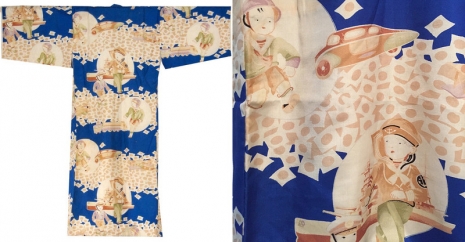
This boy’s kimono with an image of a streamlined car.

This detail from a kimono from 1933 depicts the popular figures of “the Three Brave Bombers,” real-life soldiers who perished while laying explosives to clear out the enemy’s barbed wire defenses.

This kimono has images of planes and locomotives superimposed over maps of China and Manchuria.

Not many women’s kimonos have militaristic imagery, but this one combines bombers with cherry blossoms.
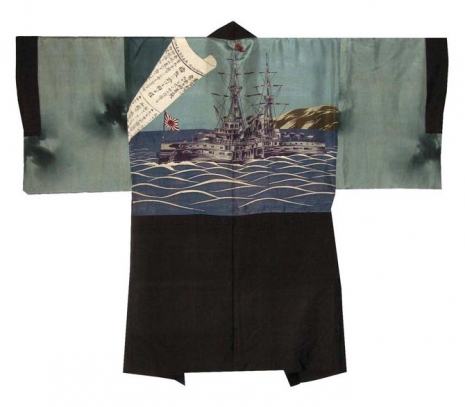
This is the Mikasa, an important ship of Togo’s at the Battle of Tsushima during the Russo-Japanese War in 1905.

On this kimono we have soldiers jumping from landing craft in the moonlight in a scene that will remind many westerners of D-Day.
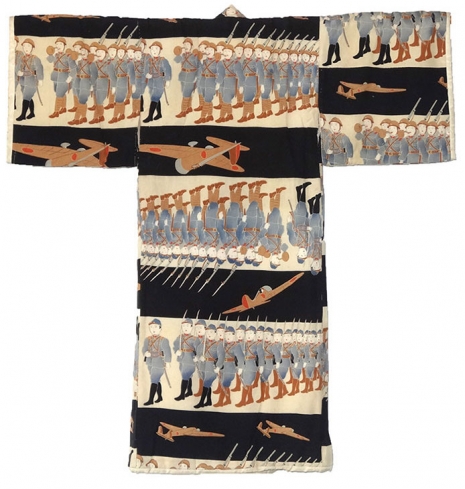
Marching troops in helmets carrying bayonetted rifles adorn this striking kimono.
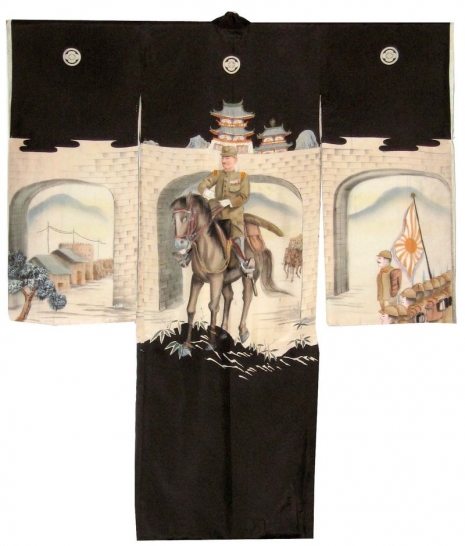
This striking image has General Matsui Iwane entering Nanking in 1937.
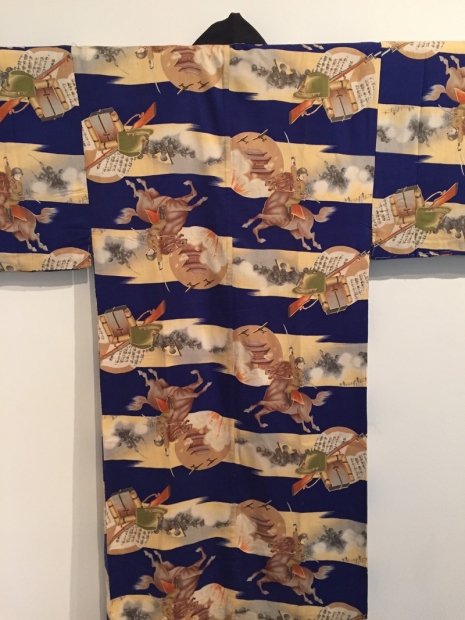
Here we have a boy soldier on horseback with a sword.

Detail of a kimono featuring Mussolini as well as a child carrying artillery shells.
Tip of the hat to Sam Perkins’ excellent item at Atlas Obscura
Previously on Dangerous Minds:
‘Our Lenin’: Soviet propaganda book for kids, 1934
The Reich Stuff: The grim Nazi propaganda magazine aimed at women